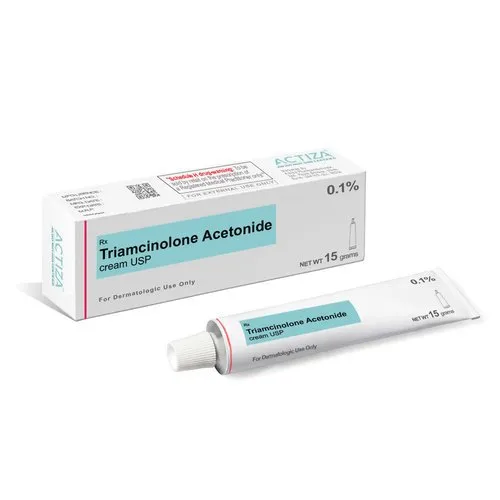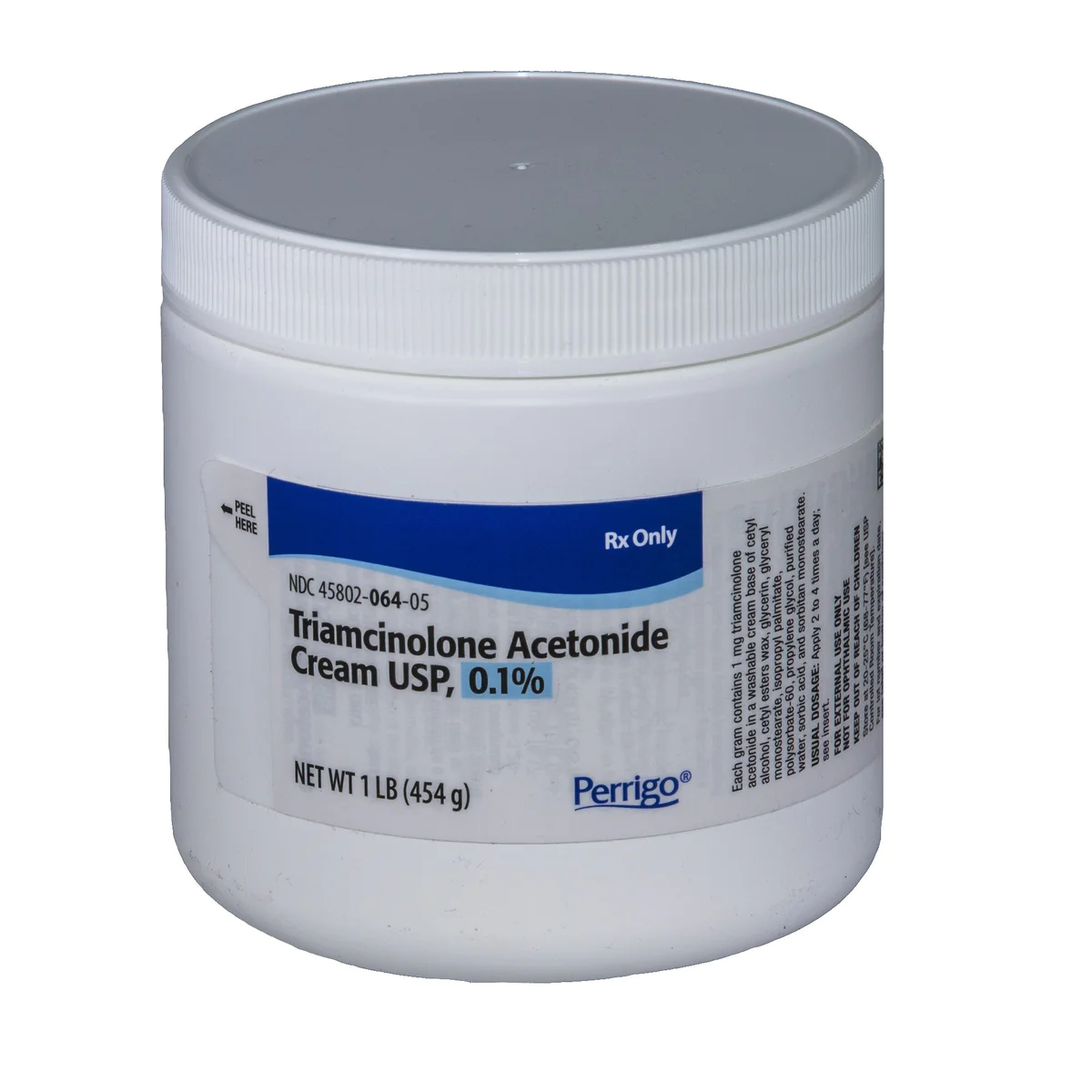Triamcinolone acetonide cream is a type of corticosteroid skin medicine. Corticosteroids are artificial hormones that act like cortisol, a hormone that the adrenal cells make naturally. The body’s defense system, inflammation, and metabolism are all controlled by cortisol.
Triamcinolone acetonide cream treats eczema, dermatitis, psoriasis, allergies, rash, and other skin diseases caused or worsened by inflammation. It makes these conditions less swollen, red, itchy, and painful.
This piece will describe what triamcinolone acetonide cream is, how it works, how to use it, its benefits and risks, and why it is not sold over the counter.
What is Triamcinolone Acetonide Cream?
Triamcinolone acetonide cream is a white or off-white cream that contains triamcinolone acetonide as the active ingredient. Triamcinolone acetonide is a type of corticosteroid that has anti-inflammatory and immunosuppressive properties. It also includes other inactive ingredients, such as emulsifying wax, glycerin, mineral oil, propylene glycol, purified water, and sodium hydroxide.
Triamcinolone acetonide cream has different strengths, ranging from 0.025% to 0.5%. The power indicates how much is present in each gram of cream. The higher the force, the more potent the cream is.
Triamcinolone acetonide cream is sold under various brand names, such as Aristocort, Kenalog, Mycolog-II, Nasacort AQ, Triderm, and Trianex. It may also be available as a generic product.
How Does Triamcinolone Acetonide Cream Work?
Triamcinolone acetonide cream enters the skin and links to specific receptors on immune system cells and other organs. When you do this, you stop chemicals from being made and released that cause inflammation and allergic responses. It also slows down the immune system, making it less able to fight off attackers or foreign substances.
The cream can ease the symptoms of eczema, dermatitis, psoriasis, allergies, and rashes by lowering irritation and immune reactions. It can also keep infections from happening or make them less likely.
But the cream doesn’t treat what’s causing these problems in the first place. It only makes the symptoms go away for a short time. When you stop taking it, your symptoms might return or worsen. Triamcinolone acetonide cream should be part of a full treatment plan that includes avoiding triggers, moisturizing the skin, using gentle cleaners, and, if necessary, taking oral medicines.
How to Use Triamcinolone Acetonide Cream
You should use it exactly as your doctor has instructed. Do not use more or less than instructed. Please only use it for as long as recommended. Do not use it in areas unaffected by your condition. Please do not use it on broken or infected skin. Please don’t use it on your face unless your doctor instructs you to.
To use the cream:
- Wash your hands before and after applying the cream.
- Clean and dry the affected area gently.
- Put a small amount of cream on the hurt area and rub it gently.
- Unless your doctor advises you to, do not cover or bandage the area.
- Rewash your hands after applying the cream.
- Follow your doctor’s instructions and repeat.

What are the Benefits of Triamcinolone Acetonide Cream?
The cream can benefit people who suffer from various skin conditions caused or worsened by inflammation, such as eczema, dermatitis, psoriasis, allergies, and rashes. Some of these benefits are:
- It can help eliminate the pain, heat, itching, and stiffness that come with these conditions quickly and effectively.
- It can improve the appearance and quality of life of people with these conditions.
- It can sometimes prevent or reduce the risk of infection or complications.
- It can be combined with other treatments, such as oral medications, phototherapy, or biologics.
- It is easy to use and apply.
What are the Risks of Triamcinolone Acetonide Cream?
The cream can also have several risks for people who use it. Some of these risks are:
- It can cause skin thinning, stretch marks, acne, increased hair growth, infection, and allergic reactions to the skin.
- It can suppress the immune system and make you more susceptible to infections or diseases.
- It can affect the hormonal balance and metabolism in the body and cause weight gain, high blood pressure, high blood sugar, osteoporosis, cataracts, glaucoma, and mood changes.
- Interacting with other medications can cause adverse reactions or reduce their effectiveness.
- It can cause withdrawal symptoms or rebound effects if stopped suddenly or without consulting your doctor.
Conclusion
It is important to diligently follow the instructions given by your doctor and promptly notify them of any side effects experienced. You should also avoid using triamcinolone acetonide cream over the counter, online, or from unauthorized sources. They may sell fake or harmful products that can damage your health.
Please visit The Newsgod for more updates

